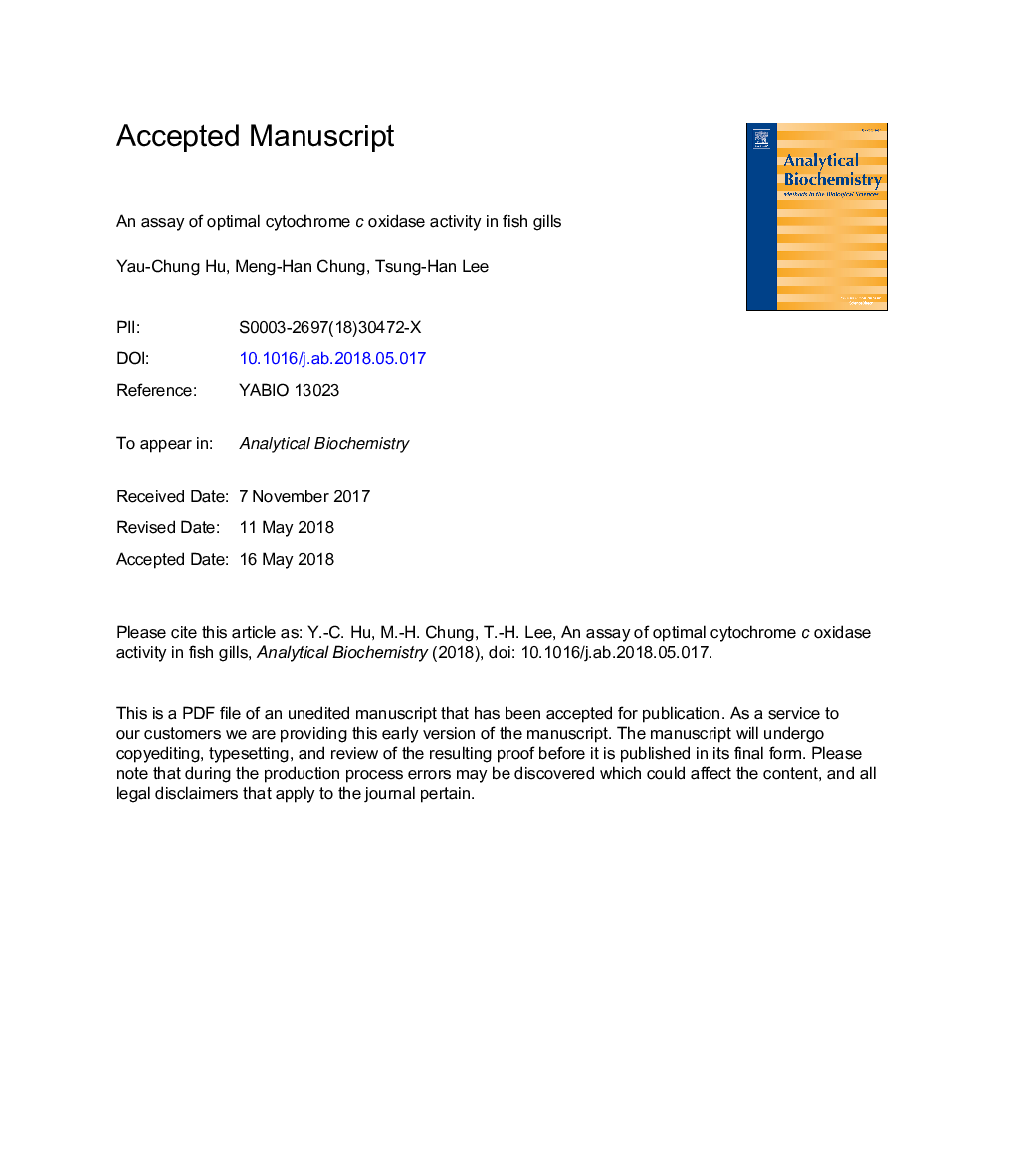| Article ID | Journal | Published Year | Pages | File Type |
|---|---|---|---|---|
| 7556723 | Analytical Biochemistry | 2018 | 43 Pages |
Abstract
Cytochrome c oxidase (COX) catalyzes the terminal oxidation reaction in the electron transport chain (ETC) of aerobic respiratory systems. COX activity is an important indicator for the evaluation of energy production by aerobic respiration in various tissues. On the basis of the respiratory characteristics of muscle, we established an optimal method for the measurement of maximal COX activity. To validate the measurement of cytochrome c absorbance, different ionic buffer concentrations and tissue homogenate protein concentrations were used to investigate COX activity. The results showed that optimal COX activity is achieved when using 50-100â¯Î¼g fish gill homogenate in conjunction with 75-100â¯mM potassium phosphate buffer. Furthermore, we compared branchial COX activities among three species of euryhaline teleost (Chanos chanos, Oreochromis mossambicus, and Oryzias dancena) to investigate differences in aerobic respiration of osmoregulatory organs. COX activities in the gills of these three euryhaline species were compared with COX subunit 4 (COX4) protein levels. COX4 protein abundance and COX activity patterns in the three species occurring in environments with various salinities increased when fish encountered salinity challenges. This COX activity assay therefore provides an effective and accurate means of assessing aerobic metabolism in fish.
Related Topics
Physical Sciences and Engineering
Chemistry
Analytical Chemistry
Authors
Yau-Chung Hu, Meng-Han Chung, Tsung-Han Lee,
